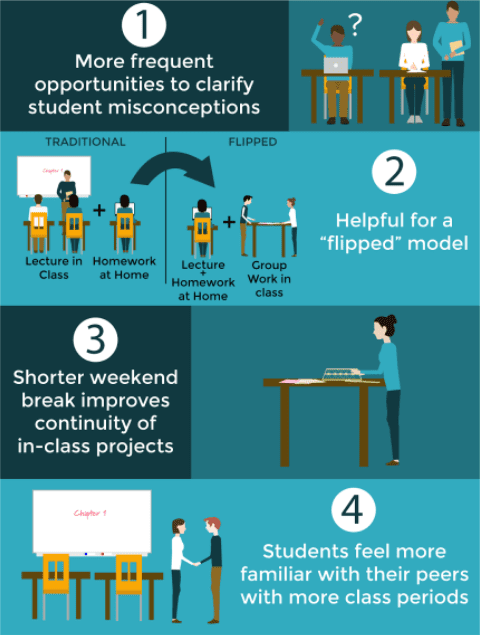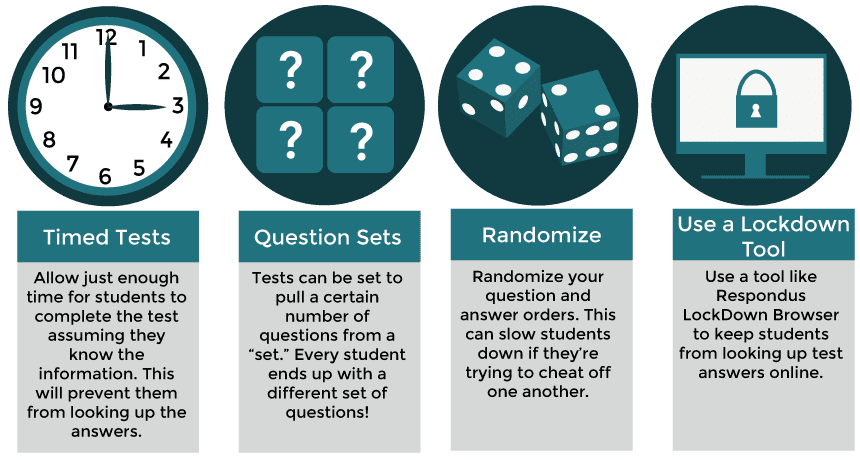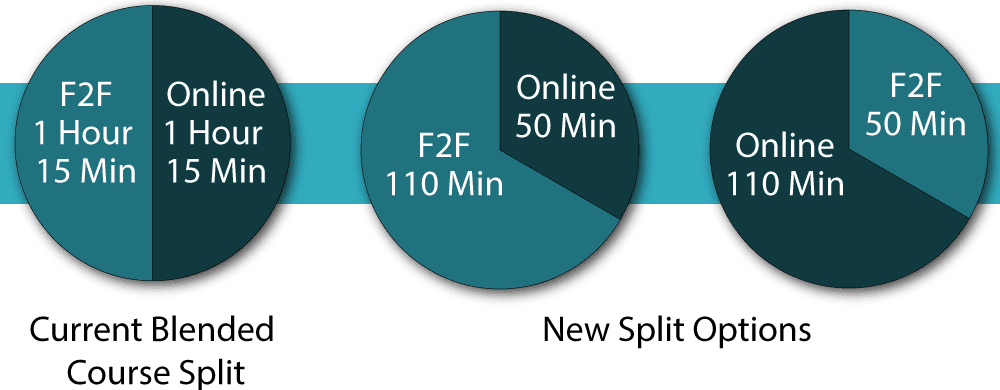Make Every Minute Matter
Make Every Minute Matter: Transitioning to a 3 Day a Week Course Schedule
A change in class scheduling is an excellent opportunity to review your course for pacing, active learning, and student experience. Some questions you can ask yourself as you begin to adjust your course are:
- What kinds of activities might work better with seeing students more frequently in the week?
- How can you leverage technology to streamline your students’ learning experiences?
- What kinds of activities might work better online than in the classroom?
There a number of benefits to seeing students three times in a week

Transitioning Face-to-Face Courses to a Three Day a Week Schedule
It is essential in a 50 minute three day a week schedule to maximize your time and make every minute matter. Here are some ideas for doing so in 3 day a week face-to-face (f2f) courses:
- For larger tests that need proctored in the classroom for academic integrity reasons, you can split them into a Part 1 and a Part 2 test on Monday and Wednesday:

- Add policies to your syllabus that students should be ready to start class at the scheduled class time. If students consistently arrive late and interrupt with their unpacking, hold them accountable for their tardiness by deducting points, or assign small minute papers for every day a student is late to class.
- If students consistently pack up early, deduct points from their participation grade.
- Talk with your department assistants to make sure you don’t have a large distance to travel in between your courses; this will enable you to arrive at your classroom early and get set up without too much delay.
- To maximize in-class time for activities, put instructions for more complicated activities online in Canvas and require students to read through the instructions prior to class and print and bring copies or pull it up on their tablets, phones, or computers in class.
- Form groups for activities online using Canvas’s People tool. This will save time on the day of the activity because students will already know their groups.
- For in-class activities, have students discuss and work together but then submit the deliverable later as an assignment online in Canvas or Google Drive. This means you can focus in class on the interaction/collaboration of the activity but the deliverable can happen as part of students’ homework outside of class.
- Consider putting your quizzes and small assessments online. There are numerous strategies for minimizing academic integrity issues that can arise from online testing:

(More information on Canvas test settings and Respondus LockDown Browser)
- Online quizzes have the added benefit of being automatically graded for some question types and give students instant feedback on their work.
- Consider putting larger exams online. Online exams won’t need to fit within a 50 minute time limit and can focus on higher order skills like application and analysis.

*Note: Be cautious if teaching a f2f course with putting the third meeting day “online”. This will create a “hybrid or blended” course. There are specific rules regarding the categorization and facilitation of blended courses and how they are reported to accrediting bodies. Providing materials and adding online collections for assignments, quizzes, and other assessments will not create a blended course, but replacing one f2f meeting day with online activities will.
Transitioning Blended Courses to a Three Day a Week Schedule
Adjusting the balance of work in blended courses can be even more difficult than readjusting face-to-face courses. Currently, some blended courses are taught with a 50% split between f2f and online work:

In designing any blended course, the most important and helpful question to ask to prioritize scheduling of activities and materials is:
What activities work best f2f and which work best online?
Any activities that students struggle to complete on time in f2f classes could benefit from some or all of the activity delivered in the online portion of the course. For example, if you typically assign peer-review to students, you could have students read and comment on their peer’s work as part of an online assignment, but workshop and discuss their comments in the f2f portion of the course.
The following chart from Powell, Helm, Layne, and Ice’s (2012) “Quantifying Online Learning Contact Hours” [PDF 393KB] may help you to readjust the scheduling for your blended course by determining how long it will take students to complete certain activities online:
| Homework Time Factors | Quantitative Measurement |
|---|---|
| Composition speed for discussion board postings | 25 words written per minute |
| Time provided for composing discussion board posting | 20 minutes allotted per discussion board |
| Reading peers’ discussion board postings | 180 words per minute (the assumption is made that student reads all of their peers’ postings for the duration of the course) |
| Reading instructor’s feedback | 10 minutes allotted per graded assignment for the student to review instructor feedback |
| Quizzes | 60 minutes allotted for taking a quiz and 60 minutes of prep time |
| Weekly lecture notes | 50 minutes allotted per issuance of weekly lecture notes |
| Links to external websites | 20 minutes per external URL |
| Midterm examinations | 3 hours are allotted for taking the exam
10 hours for studying/preparation |
| Final examination | 3 hours allotted for taking examination, 10 hours for studying/prep (or 20 hours for studying/prep when a midterm exam is not administered). |
| General reading | 250 words per double-spaced typed page |
| Reading course materials | 200 words read per minute or 180 words read per minute for electronic materials |
| Miscellaneous assignments | 120 minutes granted per miscellaneous assignment |
| Composing a formal writing assignment | 120 minutes granted for preparation time
20 words written per minute 30 minutes granted for each page of writing |
| Conducting research for a formal writing assignment | 120 minutes granted per page of writing |
(Powell, Helm, Layne, & Ice, 2012, p. 87).
References